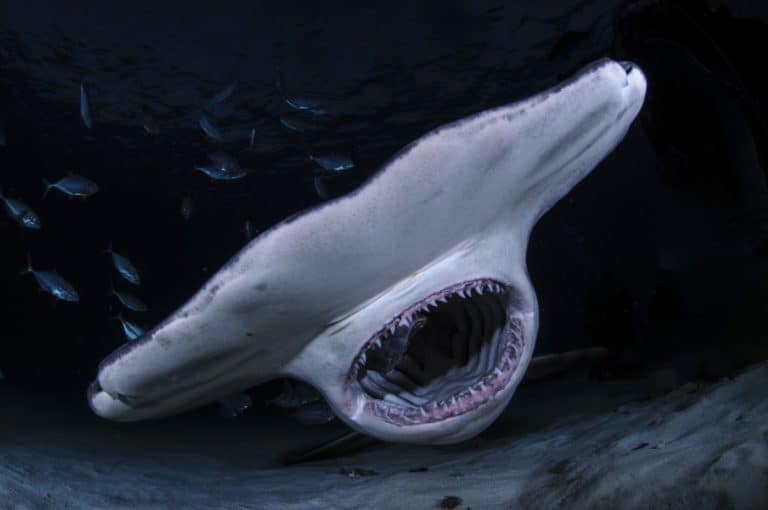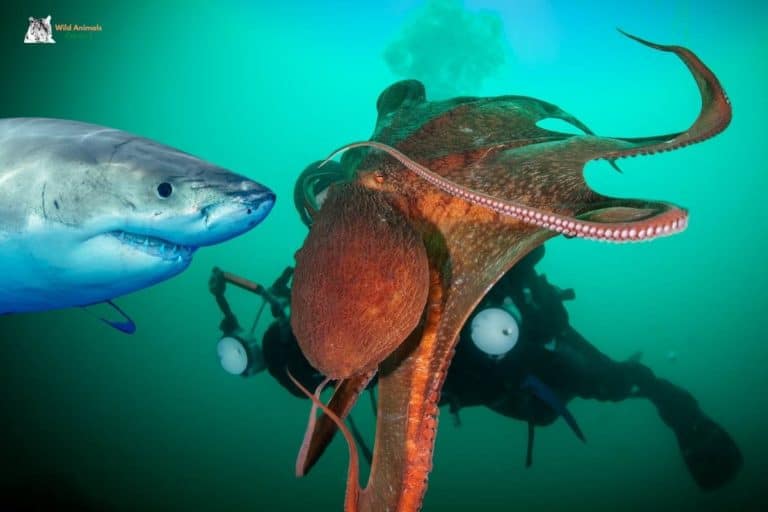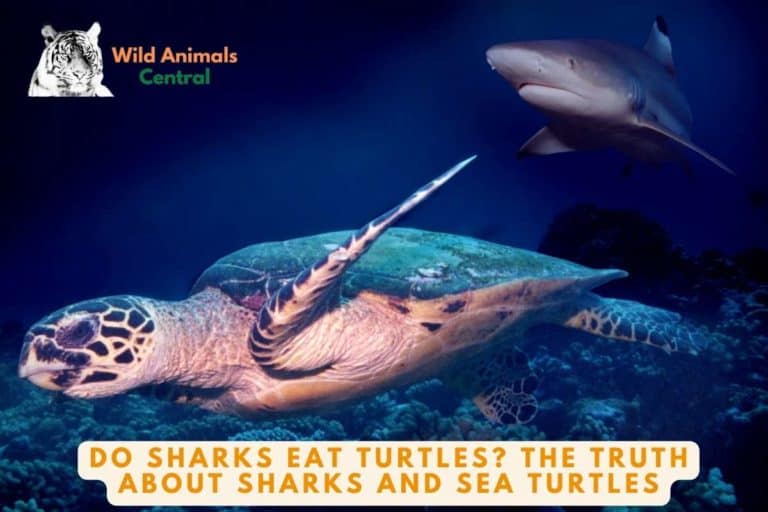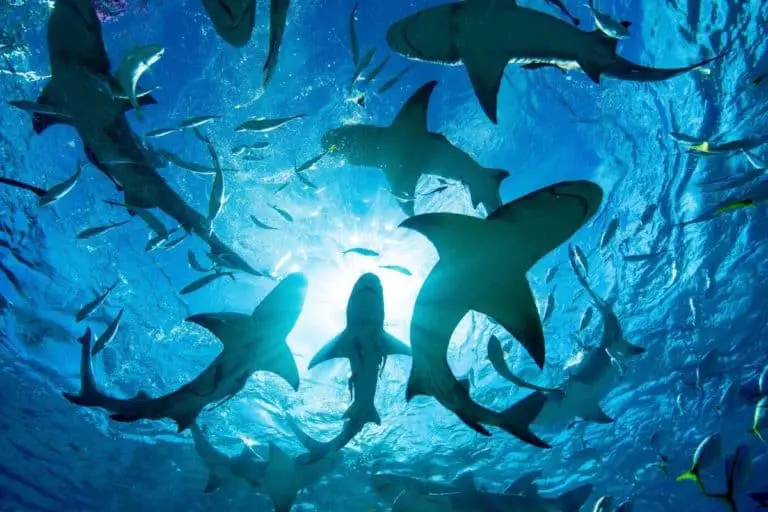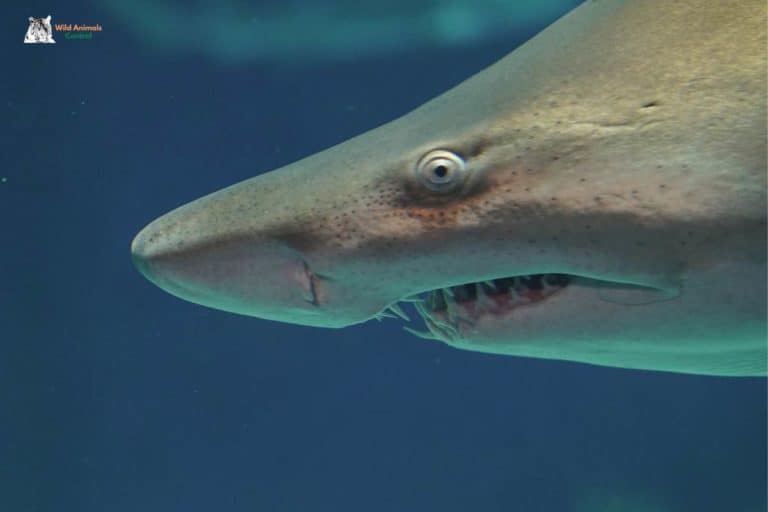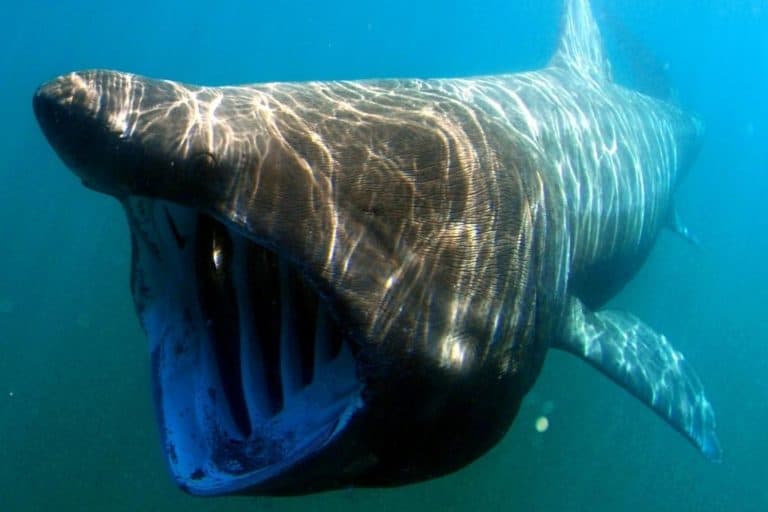18 Shark Teeth Facts You Probably Didn’t Know
When most people think of sharks, they think of ferocious creatures with razor-sharp teeth.
While it’s true that some sharks can be quite dangerous, many people don’t realize that these animals are also fascinating and unique.
Here are 18 facts about shark teeth you probably didn’t know. Enjoy!
1) Shark teeth are not actually teeth.
Shark teeth are not actually teeth. Sharks have a mouthful of sharp, serrated blades that they use to tear through the flesh of their prey.
The five rows of these razor-sharp teeth may be utilized at any time. Some sharks may even eat while swimming by repeatedly opening and closing their jaws.
2) Sharks have multiple rows of teeth that move independently.
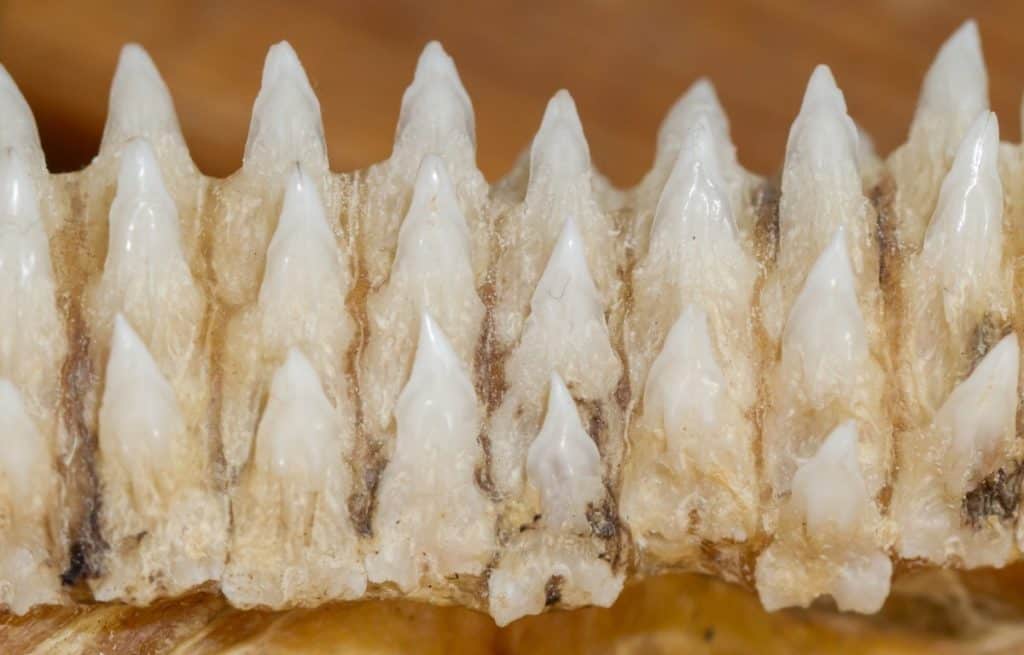
Sharks have a mouthful of teeth that can be pretty intimidating. Some people think this is why many people fear sharks, but the truth is much different.
Sharks’ teeth are meant to help them catch and eat their prey, including other marine animals such as fish and squid, not humans!
Sharks do not chew food as we do; they use their gills to extract oxygen from water while pushing it over their gills for gas exchange with the blood circulatory system to get energy.
The shape of sharks’ teeth allows them to break down prey into small enough pieces to go through the shark’s “gill rakers,” where tiny structures poke out and sort of comb through these pieces before sending them further down the digestive tract.
3) Sharks can go through up to 30,000 teeth in a lifetime.
Most sharks constantly lose and replace their teeth throughout their lives. Sometimes this happens so often that they may go through thousands of teeth in just one lifetime.
Sharks use their teeth so much that sometimes they may come out of the gum while chewing. Luckily for sharks, their teeth can grow back in just a few weeks.
4) Sharks are born with complete sets of teeth.
Sharks are born with their complete set of teeth. This is helpful to them because they immediately have a complete set of teeth and won’t be biting their prey with flat, molar-like teeth like some sharks.
5) Great White sharks have the most teeth among all species.
On average, a Great White Shark has approximately 3000 teeth at one time in its mouths with around 15 rows of teeth.
The teeth are triangular in shape, so thin and sharp they can easily pierce through the skin of their prey.
Because Great Whites have three rows of teeth on the top and two rows on the bottom, it is nearly impossible for them to lose all of their teeth at once unless they are caught by fishermen who tease them with baited lines until their teeth fall out.
6) Sharks don’t chew their food; they tear it apart with their teeth instead.
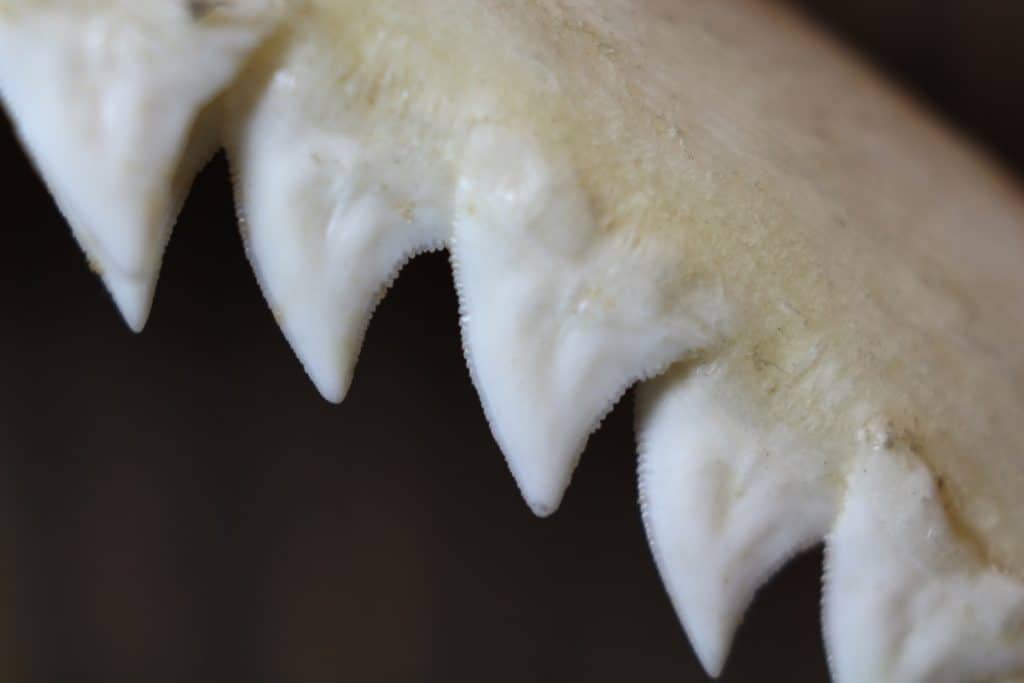
Sharks aren’t like humans who chew and swallow their food. Instead, sharks use their teeth to tear pieces off of prey by moving the upper jaw slightly forward over the target, then dropping down on them quickly, tearing off chunks.
7) The Great White shark has the most powerful jaws of all species.
The Great White shark uses a “take and drag” method while hunting, which allows for a wide range of movement when attacking prey.
With their upper jaw pushed forward, sharks can quickly grab pieces of flesh from larger animals such as turtles and seals.
The lower jaw is then brought forward to drag the shark’s prey into its mouth. This technique provides a more significant portion of food and allows sharks not to waste any part of what they catch.
8) The Dwarf Lantern shark has the tiniest shark teeth.
The Dwarf Lantern shark is only about 17 centimeters (6.3 inches) long.
This shark, which lives in deep waters off the coasts of northern Australia and New Zealand, uses its tiny teeth to catch small fish like lanternfish.
9) Tiger sharks have the most prominent teeth among all shark species.
Their long, narrow teeth are serrated, which allows them to catch larger prey. Their front teeth are more limited, while their bottom teeth tend thicker and longer for tearing apart food more efficiently.
Like humans, Tiger sharks use their front set of teeth to ripple and tear food while using their back teeth to grind up the pieces.
10) The teeth of sharks are resistant to acid and fluoride.
The teeth of sharks are resistant to acid and fluoride. Some people might not know this, but sharks’ teeth actually have a problematic protective layer for many materials to penetrate.
These layers are made up of calcium phosphate crystals, which protect against acidity, corrosion, and even some types of antibiotics.
The tooth’s hardness also helps them scrape off any pieces they may have missed while biting down on their food.
11) Sharks don’t have tooth decay.
In humans and other mammals, bacteria in the mouth convert sugars into acids that eat away at the enamel coating on our teeth.
As a result, we suffer from cavities and ultimately tooth loss if this process is not combated with regular dental care.
Sharks do not experience these problems because they don’t produce any saliva when they chew food. They instead rip chunks off it with their powerful jaws!
12) The soft mineral dentin is found in the insides of both shark and human teeth.
Dentin is a hard substance that lines the inside of teeth. It can be found in both human and shark teeth, although it has different properties in each.
- Shark dentin comprises tiny calcite crystals arranged randomly throughout the tissue.
- In contrast, human dentin contains more collagen fibers tightly packed together to make it harder.
The mineral content of dentin varies by species; sharks have high fluoride levels while humans do not.
13) Flattened teeth are common among shark species that consume hard-shelled crabs and mollusks.
Some animals have adapted to their environment by making modifications to their teeth.
Sharks are one example of this, as they often consume hard-shelled prey.
One common adaptation among shark species that eat hard-shelled prey is flattened teeth. This helps them break up the shells to get the meat inside more easily.
Flattened teeth are also found in other aquatic animals, such as sea otters and walruses. Still, these adaptations work for different reasons than sharks’ adaptation does.
Otters use flat molars to crush clams on rocks, while walruses use theirs to grind large quantities of ice when feeding on marine mammals.
14) How many types of shark teeth are there?
Shark teeth are divided into four categories: flattened dense, needle-like, pointed lower with triangular upper, and useless.
The teeth of a shark are used for different purposes depending on their shape and size.
- The most popular type, needle-like sharp points, can be seen in many kinds throughout this animal’s range.
- At the same time, other variations such as triangular upper plates or flat disks may also exist.
Still, none have been documented yet because scientists haven’t had enough opportunity to properly study all aspects of them.
How these animals use their dietary choices will determine what kind you see.
If they feed primarily off prey that doesn’t move around much, then your dense flattened tooth would make sense compared with those who eat a mainly vegetarian diet, including seeds at least until recently when fossil finds show there was once more than one wa yy to eat.
15) How strong are sharks’ teeth?
It’s pretty amazing just how strong teeth can be. The most bite force for a giant shark would be 18,000 Newtons (18kg/s). But this hasn’t been tested on living animals yet, so we don’t know if they’re capable or not!
Sharks often use slicing and head shaking to remove chunks of flesh from their prey. This means it takes less effort overall, with only minuscule amounts needed at each time step.
Of course, there is still the possibility of them having to bite down more than once for either killing or dismembering prey with ease.
16) Do all sharks have teeth?
No, not all sharks have teeth; the whale sharks are toothless; they use their gills to strain food from water passing through it. The basking sharks also have teeth, but small and not used for feeding.
17) Why do shark teeth turn Black?
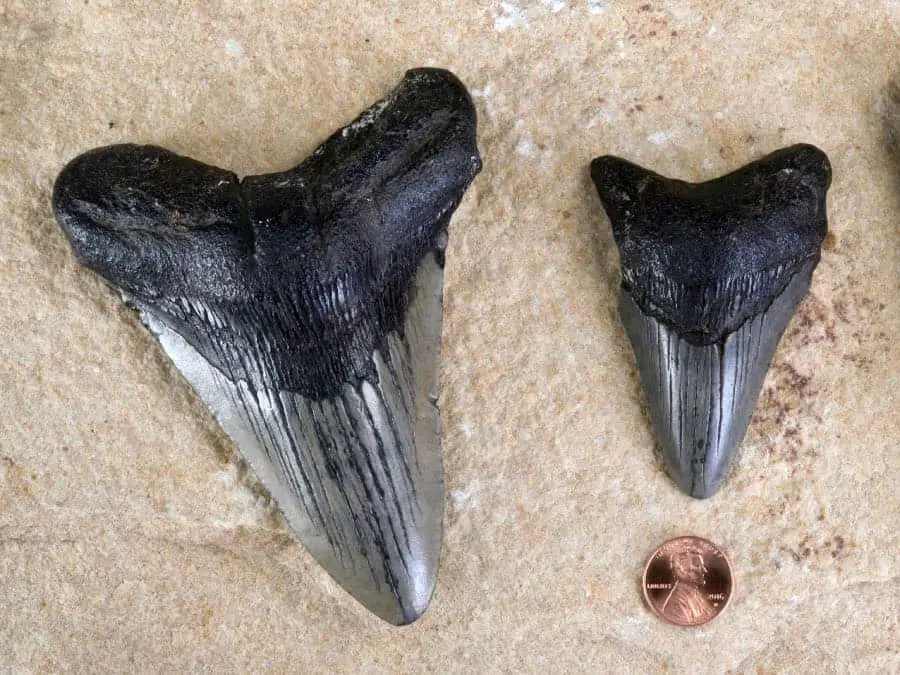
Shark teeth are one of the most common fossils because sharks die in or near the ocean.
Sharks would die, and their bodies would be pushed to shore by currents, washed up on beaches, buried under dunes, or even gnawed on by other animals.
The tooth enamel is a hard substance that naturally oxidizes when exposed to air and turns a dark color, often Black.
18) What happens when a shark loses its teeth?
Sharks continuously grow and replace their teeth.
Most giant sharks have around five rows of teeth at any given time.
When a tooth is lost or broken, a new one begins growing from the base to take its place.
If a shark loses teeth during hunting, it can still survive and hunt prey using other rows of teeth.
So sharks may lose a few here and there, but as long as they have some left, they will remain capable hunters until the end.
